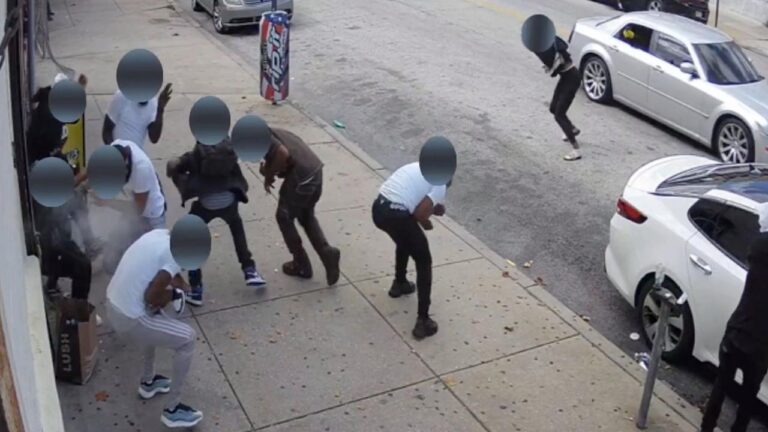Unexpected Surge in Shootings Challenges Philadelphia’s Crime Reduction Narrative
Shortly after Philadelphia’s District Attorney celebrated a landmark drop in the city’s overall crime statistics, the city was jolted by a series of four shootings within a few hours, injuring six people. These violent episodes unfolded rapidly across diverse neighborhoods, casting doubt on the sustainability of recent crime improvements. Despite swift police responses and ongoing investigations, these events highlight the persistent struggle Philadelphia faces in curbing gun-related violence.
Summary of the shooting incidents:
- Two individuals sustained non-critical injuries in a dispute near Fishtown.
- A targeted attack in North Philadelphia left two people wounded.
- A drive-by shooting in West Philadelphia injured one person.
- One victim was hurt during a late-night altercation downtown.
| Neighborhood | Time | Number of Victims | Nature of Incident |
|---|---|---|---|
| Fishtown | 3:15 PM | 2 | Personal dispute |
| North Philadelphia | 5:45 PM | 2 | Deliberate shooting |
| West Philadelphia | 7:20 PM | 1 | Drive-by shooting |
| Downtown | 10:10 PM | 1 | Confrontational shooting |
These violent episodes have reignited discussions among policymakers and community advocates about the complexities behind Philadelphia’s crime statistics. While aggregate data may indicate progress, the reality on the ground in many neighborhoods remains fraught with danger, necessitating ongoing, focused interventions. Law enforcement continues to appeal to the public for tips to aid in solving these cases and restoring community safety.
Bridging the Gap: Crime Data vs. Actual Violence in Philadelphia
Although official reports boast a significant 15% reduction in Philadelphia’s overall crime rate, the recent cluster of shootings reveals a troubling disconnect between statistical improvements and the lived experiences of residents. Over a mere 12-hour period, four separate shootings injured six people, underscoring that violent crime remains a pressing issue in certain pockets of the city.
This divergence stems from several factors that complicate crime measurement and public perception:
- Incomplete reporting: Many violent incidents go unreported or are under-documented, leading to gaps in official data.
- Geographic disparities: Crime reductions are often uneven, with some neighborhoods seeing improvements while others face surges.
- Focus on crime categories: Declines in property crimes do not necessarily translate to decreases in violent offenses.
| Crime Metric | Reported Change | Community Effect |
|---|---|---|
| Total Crime Rate | -15% | Overall positive trend, but uneven |
| Violent Crime Incidents | -3% | Still a significant concern |
| Recent Shooting Events | +4 in 12 hours | Increased fear and anxiety |
Community Mobilization: Demands for Stronger Policing and Violence Prevention
Following the recent shootings, local residents and community leaders have amplified calls for more robust public safety measures. Many advocate for a heightened police presence, particularly in neighborhoods identified as violence hotspots. Grassroots organizations have convened emergency forums to strategize on reducing gun violence and fostering safer environments.
Primary community requests include:
- Increased foot patrols during vulnerable nighttime hours
- Expanded youth engagement initiatives to tackle underlying causes of violence
- Strengthened partnerships between law enforcement and community members for better information sharing
- Growth of conflict resolution and crisis intervention teams to defuse tensions early
| Program | Focus | Impact |
|---|---|---|
| Youth Engagement | Violence Reduction | Lowers juvenile crime rates |
| Community Policing | Neighborhood Security | Builds trust, enhances responsiveness |
| Conflict Mediation | Crisis Management | Prevents escalation to violence |
Comprehensive Strategies to Combat Gun Violence in Philadelphia
In response to the recent shooting surge, Philadelphia’s law enforcement and community stakeholders are adopting a holistic strategy to reduce gun violence. Central to this plan is the reinforcement of community policing efforts aimed at restoring trust and fostering collaboration between officers and residents in violence-affected neighborhoods. This includes ramped-up foot patrols and partnerships with local nonprofits to identify vulnerable individuals and intervene proactively.
Additionally, the city is intensifying efforts to dismantle illegal gun trafficking networks that fuel violent crime. Prevention programs targeting socioeconomic factors—such as poverty, educational disparities, and mental health access—are also being prioritized. Key initiatives encompass:
- Expanded mentorship and vocational training for youth to provide constructive alternatives to gang involvement.
- Community-led conflict resolution workshops designed to reduce retaliatory violence cycles.
- Increased investment in trauma-informed services to support victims and reduce repeat offenses.
| Initiative | Objective | Anticipated Result |
|---|---|---|
| Community Policing | Enhance trust and cooperation | Lower neighborhood tensions and violence |
| Youth Development Programs | Offer alternatives to criminal activity | Decrease youth involvement in shootings |
| Trauma-Informed Care | Address psychological impacts of violence | Reduce rates of repeat victimization |
Final Thoughts: Navigating Philadelphia’s Persistent Safety Challenges
The recent wave of shootings injuring six people across Philadelphia, occurring mere hours after the District Attorney’s announcement of a historic crime decline, starkly illustrates the city’s ongoing battle with gun violence. While overall crime figures suggest progress, these incidents reveal that violent acts continue to disrupt communities and undermine public confidence. Moving forward, a sustained, multifaceted approach involving law enforcement, community organizations, and residents is essential to foster safer neighborhoods and break the cycle of violence in Philadelphia.








